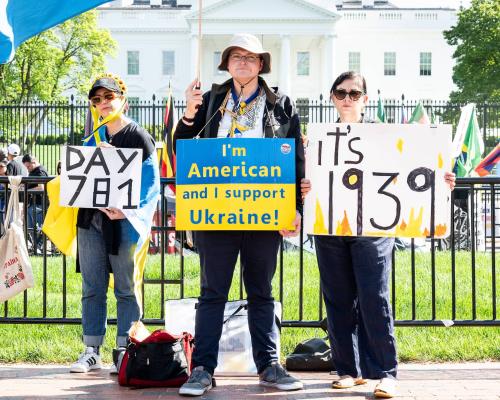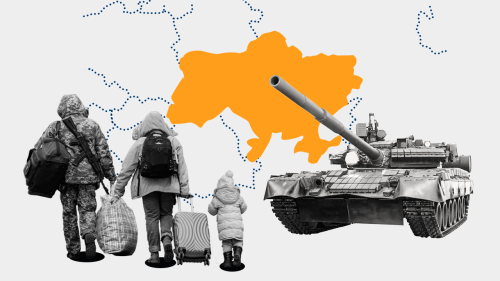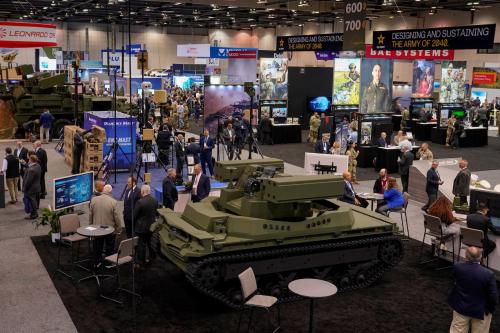It took a while, but we appear to have finally reached a national consensus that General David Petraeus and Ambassador Ryan Crocker have made progress in Iraq. They have improved security and forged deals among local political leaders in the north, west, and even much of the center of the country (including important parts of Baghdad). This, in turn, has made it possible to start to revive local economies in some of those same areas.
But the progress has been uneven. The national economy remains stagnant, with stubbornly high unemployment. Iraq’s central government is still locked in the deadening grip of Shia warlords uninterested in compromising with Iraq’s other ethnic and sectarian groups or, for the most part, even with one another. And the southern half of the country is deteriorating even as the northern half improves.
The good news is that this is entirely in keeping with historical norms. Typically, a properly executed counterinsurgency operation begins by creating basic security for key parts of the population. Security prompts local leaders–who are usually more in tune with their war-weary populations than the central government–to strike deals and broker truces that allow their local economies to revive. Over time, this approach forces the national leaders to become more conciliatory or risk losing their jobs.
The civil war in Northern Ireland is a good example. In the 1970s, the British, much like the Americans today, began emphasizing neighborhood security and de-emphasizing search-and-destroy missions. That made economic and political development plans possible in the ’80s, which in turn produced national-level reconciliation talks in the ’90s. It is worth remembering that Ian Paisley and Martin McGuinness were every bit as savage in their chauvinism as Moqtada Al Sadr and Abu Musab Al Zarqawi in Iraq. They changed their tunes only after a years-long bottom-up approach showed their constituents that peace was possible–and threatened their leadership roles if they didn’t pursue it seriously.
The bad news is that, while the pattern we have seen in Iraq is fully consistent with success, it also remains fully consistent with failure. In Vietnam, General Creighton Abrams produced encouraging results at the grassroots level between 1968 and 1972 but could not translate bottom-up progress into top-down reform of the Vietnamese central government before the United States effectively ended its support. The result was a state too weak to stand up to attack from North Vietnam.
As both of these examples illustrate, such campaigns require lots of time. In Iraq, several important factors, including the fortuitous and well-exploited “Anbar awakening,” in which large numbers of Sunni tribes turned on their former allies in Al Qaeda in Iraq (AQI) and other Salafi extremist groups, has speeded progress. But there are three hurdles the United States must clear if it is to convert initial success into victory and leave Iraq as the next Northern Ireland, instead of the next Vietnam. This will still require considerable skill–and not a little luck.
The basic idea behind the surge is that counterinsurgency efforts require a certain ratio of security personnel to civilians (usually about 1 to 50). If there aren’t enough capable, reliable soldiers and policemen to handle the whole country simultaneously, as has been the case in Iraq from the start, you concentrate those available in key regions, train new indigenous formations in the areas secured, and slowly spread outward as more security personnel become available.
In Iraq, the surge brigades allowed General Petraeus to employ the prescribed amount of force in most of Baghdad and its outlying “belts” of villages. It also allowed him to take advantage of important opportunities in Anbar, Nineveh, and Diyala provinces, which have been critical in mauling AQI and the other Salafi extremist groups. Within these areas, U.S. forces have diligently worked with Iraqis to build up local security formations to supplement the national Iraqi Army (which is making real, but gradual, progress) and to substitute for the national Iraqi Police (which remains mostly a disaster).
But what will happen when the American presence returns to pre-surge levels this coming summer? Will local Iraqi security formations hold together if U.S. combat brigades are removed from their neighborhoods? As the Americans pull out of parts of Iraq, will Salafi extremist groups stage a comeback?
The answer is likely to be found in places like Anbar and Nineveh provinces. In Nineveh, local political deals, economic progress, and improvements in Iraqi Army formations have allowed the United States to reduce its presence by thousands of troops–with most of those serving as advisers and support teams for Iraqi units. In Anbar, the new partnership with the tribal sheiks has transformed Iraq’s worst province into arguably its best, allowing for the possibility of a reduction in U.S. troops. If places like Anbar and Nineveh are able to sustain themselves in the coming months, then there is a good chance that Iraq can survive the post-surge drawdown. If not, then we as a nation will have to confront the hard choice of whether it is better to continue to prop up the country to prevent a slide into all-out civil war that could destabilize the region, or to conclude that Iraq is lost and redeploy our resources to try to contain the chaos.
When I was in Iraq this July, there was one question I kept asking senior American officials to which I never got a good answer: “How are you going to handle southern Iraq?” Violence in southern Iraq–virtually all Shia-on-Shia–continues to worsen. Local warlords go after each other, the big national militias like the Mahdi Army and the Badr Organization vie for territory and influence among the local power brokers, and the central government has little control. There are some positive signs–such as Shia villages asking for U.S. help in getting rid of the Mahdi Army, whose members are now fighting among themselves–but the overall trend is toward waxing violence and waning government authority.
This is a serious problem. The south is home to about 40 percent of Iraq’s population. It provides Iraq’s only access to the sea. Most of Iraq’s key religious shrines are in the south. And two-thirds of Iraqi oil production and most of its proven reserves lie there as well.
It is clear that the relative successes in the north, west, and center have only been achieved because of the presence of U.S. combat troops and their change in strategy and tactics. If they continue to make progress, then those parts of the country might be fairly stable and secure in two to five years. However, it seems unlikely that the northern half of the country can be stabilized if the southern half slides into chaos.
American officials suggest that stabilizing southern Iraq will be a job for Iraqi forces with American personnel largely serving as advisers and fire support teams. But, at present, even the best Iraqi formations would have trouble taking back the south from the militias and criminal gangs. And, because failure could decimate the morale and confidence of the Iraqi security forces, it seems unwise to take such a risk until the Iraqis are up to the challenge. It seems equally unwise to send the more competent Iraqi formations south any time soon, lest doing so jeopardize the gains they have made in other areas. In other words, Iraqis won’t be ready to start pacifying the south for several years, during which time the problems there will certainly complicate and might undermine further progress in the north, west, and center.
The alternative, of course, would be for large American and Iraqi combat formations to work together in the south as they have in the north, west, and center. But we will not be in a position to start such a campaign in the south for the same two to five years that it will take to cement the stability of those other regions (assuming that that process does not reverse itself). After all, once the surge brigades have returned home, we will not want to pull any more American units from the north, west, and center for some time to ensure that those areas remain stable.
In the meantime, the United States is going to have to work with our Iraqi allies, the United Nations, Iraq’s neighbors (including Iran), and anyone else willing to help prevent the south from deteriorating too fast. There certainly are capable Iraqi leaders in the south, like the security chiefs in Basra, Lieutenant General Mohan Hafidh and Major General Jalil Khalaf. The more resources–money, manpower, authority, and military support–we can give such leaders, the more likely it is that we can prevent the south from dragging down the rest of the country.
Despite the progress of the surge in the north, west, and center of Iraq, the country’s central government remains a highly counter-productive force, one that seeks to advance chauvinistic Shia interests–and specifically the interests of the bigger Shia warlords–at the expense of the country as a whole, to say nothing of its many minorities.
To address this crippling problem, the United States and its allies (among the Iraqis, neighboring states, and the wider international community) should try at least three different approaches: lean on this government to make the compromises it won’t, replace it with one that will, or make it largely irrelevant (for some period of years) by decentralizing power to Iraq’s provinces and municipalities and the Kurdish regional government.
The United States still has considerable leverage with the Iraqi leadership, which does not want us to leave the country. Both the threat of departure and a willingness to remain can thus be useful if employed properly. We should not tell the Iraqis that they had better shape up because we are leaving on such-and-such a date–this will only convince them that the civil war starts in earnest the day after, and they will start gearing up for it now. Instead, we should assert that the United States will only “stay” (in the sense of drawing down our forces more gradually) if the Iraqis are willing to make the compromises that could create a foundation for sustainable stability. As Anthony Blinken, a former Clinton National Security Council official, has described it, we should employ a policy of “staying on success,” not staying regardless of how badly the Iraqis fail, as the Bush administration has.
If such pressure fails, then the United States should work with the international community to replace the central government–not by substituting one coalition for another within the current Council of Representatives (COR), but by advancing the date for elections (from late 2009 to late 2008 or early 2009) to get an entirely new COR. The fundamental problem is that the current COR is dominated by Shia warlords who do not represent the Iraqi people. They were elected in December 2005 only because the “closed-list” voting system encouraged cronyism and thuggish behavior, and the utter lack of security at the time left too many Iraqi Shia with no one to turn to for protection or basic services except the militias. Sunnis then protested the results of the election, declaring them fraudulent. Especially if the surge continues to improve the lives of Iraqis, new elections under a different electoral system employing open lists or geographic representation could produce a better COR–one not dominated by Shia warlords and one more willing to compromise and to govern justly.
The last, and possibly most important, track the United States can follow is to push for far greater decentralization of resources and authority. The Maliki government–especially its powerful and pernicious Office of the Commander in Chief–has been a force against progress, denying towns and neighborhoods the right to create their own security forces, withholding funds, demanding the removal of competent personnel, and foisting Shia chauvinists on them instead. Thus, the less influence the central government has, the greater the likelihood that Iraqis and Americans can secure the population, forge local political deals, and build up local economies. In the short and medium term it may be necessary for Iraq to move to something closer to a cantonal system along Swiss lines, in which each province would be semi-autonomous, reducing the need for cooperation in Baghdad among the different ethnic and religious groups.
Each of these moves is complementary and even reinforcing. Washington’s willingness to push for new elections could make the current government more amenable to compromises. A push for decentralization could do the same; or it might force the government to call new elections to try to preserve its power; or it could cultivate new local power bases that would allow independent candidates to stand up to the warlords. And the leverage created by properly manipulating threats to stay or leave (along with Shia fears that the Anbar awakening has created a new Sunni counterweight) might be enough to convince the COR to pass laws easing decentralization.
The bottom line in Iraq remains complicated. We should be heartened by recent progress, but we should not assume we have won yet, either: Failure is still at least as likely as success. But all is far from lost in Iraq, and the outlines of a successful strategy are finally appearing. Nevertheless, if the Bush administration is going to engineer lasting achievements from the accomplishments of the surge so far, it still has a lot to do and little margin for error.



Commentary
Apres-Surge: The Next Iraq Debates
December 31, 2007